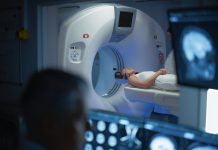Researchers at Mayo Clinic have created a new prediction model combining age, sex, genetic markers, and brain amyloid levels to estimate an individual’s lifetime risk of developing Alzheimer’s disease or mild cognitive impairment
Researchers at the Mayo Clinic have developed a novel tool that estimates a person’s risk of developing Alzheimer’s disease–related memory and thinking decline years before symptoms appear. Drawing on data from the long-running Mayo Clinic Study of Aging, the model integrates factors such as age, sex, APOE ε4 genotype, and brain amyloid levels seen on PET scans. Researchers say the tool could help clinicians and patients take action earlier, potentially slowing or preventing progression.
“What’s exciting now is that we’re looking even earlier — before symptoms begin — to see if we can predict who might be at greatest risk of developing cognitive problems in the future,” said Clifford Jack, Jr., M.D., radiologist and lead author of the study.
The findings are detailed in The Lancet Neurology.
Tool calculates an individual’s likelihood of Alzheimer’s disease
Alzheimer’s disease is marked by two key proteins in the brain, amyloid and tau. The new prediction model, developed by the Mayo Clinic, combines factors such as age, sex, genetic risk associated with the APOE ε4 genotype, and brain amyloid levels detected on PET scans. The APOE ε4 genotype is a well-established genetic risk factor for Alzheimer’s disease, and its inclusion in the model improves the accuracy of risk predictions.
Using the combined data, researchers can calculate an individual’s likelihood of developing MCI or dementia within 10 years or over the predicted lifetime. Of all the predictors evaluated, the brain amyloid levels detected on PET scans were the predictor with the most significant effect for lifetime risk of both MCI and dementia.
The study revealed that women are at a higher lifetime risk than men of developing dementia and mild cognitive impairment (MCI). MCI is a transitional stage between healthy aging and dementia that can impact quality of life while still allowing individuals to live independently. Both men and women who carry the common genetic variant, APOE ε4, also face an increased lifetime risk of these conditions.
“This kind of risk estimate could eventually help people and their doctors decide when to begin therapy or make lifestyle changes that may delay the onset of symptoms. It’s similar to how cholesterol levels help predict heart attack risk,” said Ronald Petersen, M.D., PhD, neurologist and director of the Mayo Clinic Study of Aging, who is a co-author of the study.
Insight into the effects of Alzheimer’s
The research draws upon the Mayo Clinic Study of Aging, a long-running effort in Olmsted County, Minnesota, that tracks the public over time.
For this study, the researchers used data from 5,858 participants and followed them even after they stopped participating in the study, through their medical record data. This ensures a nearly complete picture of who eventually develops cognitive decline or dementia.
“This gives us a uniquely accurate picture of how Alzheimer’s unfolds in the community,” said Terry Therneau, PhD, who led the statistical analysis and is the senior author of the study. “We found that the incidence rate of dementia was two times greater among the people who dropped out of the study than those who continued to participate.”








